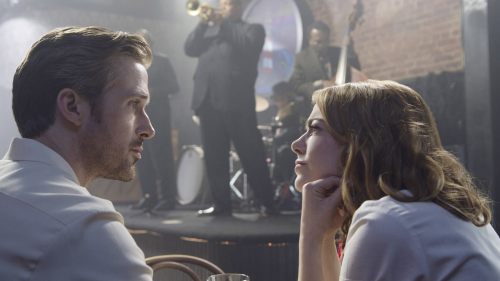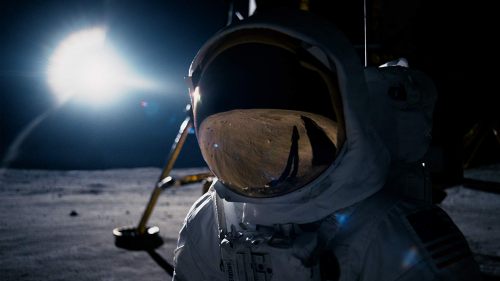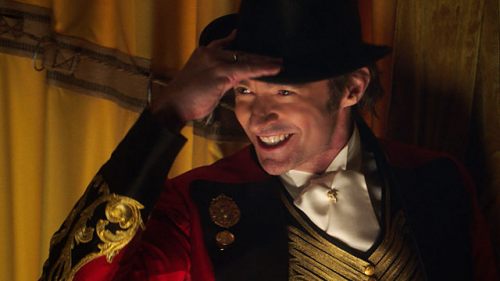LA LA LAND Review: Melting Frozen Hearts, Mending Broken Ones
Originally published on October 22, 2016.
“Here’s to the ones who dream, foolish as they may seem…”
Think of a moment when you realized the film you were watching was destined to be a classic. It could be the fiery dust storm from Mad Max: Fury Road, or the nail-biting Deer Hunter Russian roulette, or the violent baptism in There Will Be Blood, or any number of scenes from The Godfather. When you know, you just know. And when it comes to Damien Chazelle’s La La Land there’s a chance you’ll know from the very first scene. And the second. And the third, and so on. An uninterrupted series of moments that are immaculately composed. Picturesque, exact and melodious encapsulations of mood and time and place, to make up a whole that is breathtaking from its opening, sumptuous all the way through, and deeply, deeply soul-cleansing by the time it comes to a close.
Chazelle began his career making musicals. His debut feature, Guy and Madeline on a Park Bench, was a vérité indie about a Boston Trumpeter, and were he to only make films about Jazz from now on, we as a culture would be all the better for it. La La Land, his follow-up to Whiplash is as much a ‘50s style Cinemascope Musical as it is a celebration of American music, specifically the origins and conventions of his chosen genre, one born out of spontaneity and the need to connect beyond spoken language. But where Whiplash felt like a more clinical examination, with characters obsessed with the unattainable idea of artistic perfection, Ryan Gosling’s Sebastian espouses the improvisational nature of his dying art form during his first date with Mia, Emma Stone’s struggling actress whose newfound drive and success come through stories that are either momentary or self-written. La La Land as a picture follows suit, falling into rhythm with Sebastian’s pianist antics and Mia’s heartfelt outbursts, a film that one can intellectualize as having been meticulously crafted, but one that feels completely improvised, born out of each emotional moment like a phoenix from flame. A moving camera that feels like it’s choosing its frames on sheer impulse – a precise impulse dictated by its characters and settings; at one point it even spins in the middle of a swimming pool as we gaze out at decadent Angelinos – it feels as spontaneous as the sudden song and dance of its leads and its ensemble. It’s akin to watching an accomplished musician create in the moment, without having seen the years of toil it took them to get there. You know that it must’ve taken effort, for we are all logical creatures, but rather than thinking about the logistics of creation, it’s a process we’re able feel through the music. We’re emotional beings too.
That emotion is part of what’s celebrated in La La Land, which opens amidst your average Los Angeles traffic jam. The sweltering sun beats down on cynical drivers as they honk and argue on their way to auditions, an image typical of L.A. and one that speaks volumes about the film’s city-specific identity. But like emotion and art and music and people, Chazelle wants to celebrate the city as well, for it’s where these people live and love, and where they create even when they’re defeated. Without warning, the honks become coordinated as drivers begin stepping out of their cars and in to the narrow spaces between them, exploding with music and colour, and a newfound sense of optimism. Just another day of sun becomes “Another Day of Sun!”, an anthemic reorienting of the city itself. Before long, every car as far as the eye can see has a dancer atop it, as Chazelle and DP Linus Sandgren’s camera weaves between them, and over them, and under them effortlessly, in a scene that regardless of whether it was actually one shot (or was even meant to be presented as such), feels completely seamless in its rhythms. These people are bogged down by life in Los Angeles, but the music is their outlet.
Art is both passion and escape for these characters, and when we first meet Sebastian and Mia, they aren’t quite as chipper as the dancers on the street. In fact it takes several encounters before they get along, each one a tête-à-tête in the style of an old screwball (Chazelle’s influences are truly multitudinous, and he binds them together with ease), and even when Mia is initially roped into dance numbers by her friends and roommates, Stone’s signature quirkiness says one thing clearly: Mia doesn’t take music seriously. She’s along for the ride, certainly, even leading the numbers she’s a part of, but there’s a constant awareness on her part, like she’s an actress in a self-referential musical film as opposed to a character lost in feeling. This changes however, when she and Sebastian first get talking and he introduces her to his love for jazz.
Sebastian and Mia complement each other in ways that feel dramatically whole. Sebastian is passionate about his art and about starting a club someday, but he lacks the drive to achieve it. Mia on the other hand is nothing but driven, going back and forth between her on-the-lot barista job and every audition imaginable, reciting recycled dialogue adjacent to rooms full of women who look just like her. Once a standout in her small hometown, the city has robbed her of her individuality. She fears what might happen if she truly expresses her art through her own words and experiences, whereas Sebastian has no care for what others think of him. It’s fitting then that after she makes a fool of him at a typical Hollywood house party, he reluctantly rescues her from a conversation with a minor albeit familiar LA archetype, a writer who wants nothing more than to put terrible sounding words into the mouths of other people. A bullet dodged, as she begins not only an important new relationship, but a journey toward finding her own voice as an artist.
On screen together for the third time after Crazy, Stupid Love and Gangster Squad, Gosling and Stone’s chemistry is still completely electrifying, even in its quiet moments. Their long walk to the elevated location made familiar by the marketing (pictured above; too gorgeous not to be) allows the characters to explore the boundaries of their dynamic in jest, prodding cautiously against the surface. Their comedic camaraderie hasn’t skipped even a beat, and it continues in the form of physical comedy before transitioning smoothly and organically into an all-out tap number, one that further allows them to test the waters of this new and exciting dichotomy. Sebastian, a musician who makes a habit of deviating from Christmas set-lists, wears his tap-shoes everywhere, always ready for a chance to express himself. Mia on the other hand needs to change into hers, from the uncomfortable pair she tried out at the party. Pure expression isn’t her first instinct, but it’s where both she and Sebastian are at their most comfortable. And in yet another gorgeous cinematic throwback, the film doesn’t dare break away from their tap-battle, making tremendous use of the wide frame by filling it with movement. Even in a film full of tricks and gimmicks, the best visual effects are still actors.
The expression of Sebastian and Mia’s courtship is pure cinema, up and down its entire spectrum. From glances and hand-movements within the constraints of a theatre, to quite literally floating away and waltzing among the stars – and these are merely the ups of their romance. La La Land has no delusions about the realities of modern relationships, and the heart-wrenching difficulties therein. The eventual problems they face are both personal and interpersonal in ways that pivot around their art: self-doubt, compromise, failure, success, even the mere changing of trajectories. When Gosling and Stone aren’t molding themselves to fit the operatic paradigms of classic Hollywood, they’re doing career-best work in the realm of realism as both they and the film traverse a tonal tightrope that ought to seem impossible to conquer. And yet the filmmakers swerve in and out of these varying styles as if following that same mantra of improvisation, all while keeping the characters’ journeys in complete focus. Where one beat transforms the energetic musical into a quiet, bare-bones dinner drama (shot entirely in close up), the next lights the screen on fire by whipping and shaking alongside the characters as they engage in an argument. Attention to story detail and its relationship to form is truly a thing of wonder here.
From its first frame to its very last, La La Land’s 35mm anamorphic capture boasts a palette so vivid it’s almost haunting. It bursts with colour at every turn, so picturesque that blinking becomes a criminal offense. Its costume and set designs use the loudest of hues to celebrate the colours within, but the film hits you where it hurts when the outfits turn simple and the lighting overpowers you instead, from the flared twinkle of a street lamp during quiet contemplation, to the harsh green mood-light during the aforementioned argument – the first instance where the celluloid’s robust skin-tones begin to feel sickly. It’s hard not to sound hyperbolic when praising every little aspect, but it’s a film that feels truly complete.
I could talk for hours about its musical numbers, lingering melodies with lyrics belted by singers who are, perhaps, less-than-perfect. But Gosling and Stone bring such honesty to their often larger-than-life roles that the emotions feel pure regardless. The whole affair is a tonal juggling act that makes you forget the individual natures of each part it stitches together – if that’s the feeling of forgetting yourself during a movie, then it hits that note as well – but when it eventually reaches a point where the mere celebration of cinema isn’t enough, it goes beyond in a way that feels almost profound. It retreads certain earlier scenes, viewing them through the idealistic lens of the ‘50s, and it allows events to unfold through rose-tinted glasses in ways that feel both euphoric and devastating.
More than anything, La La Land is a promise. Steeped in cinematic language we’re all intimately familiar with, it’s a promise of honest, aching experience captured through joy and wonder, a promise fulfilled by its own existence, a promise that idealization of experience doesn't have to exist in contention with reality. A promise that the movies will endure, as long as we believe we can endure too.
“Here’s to the hearts that ache. Here’s to the mess we make.”



